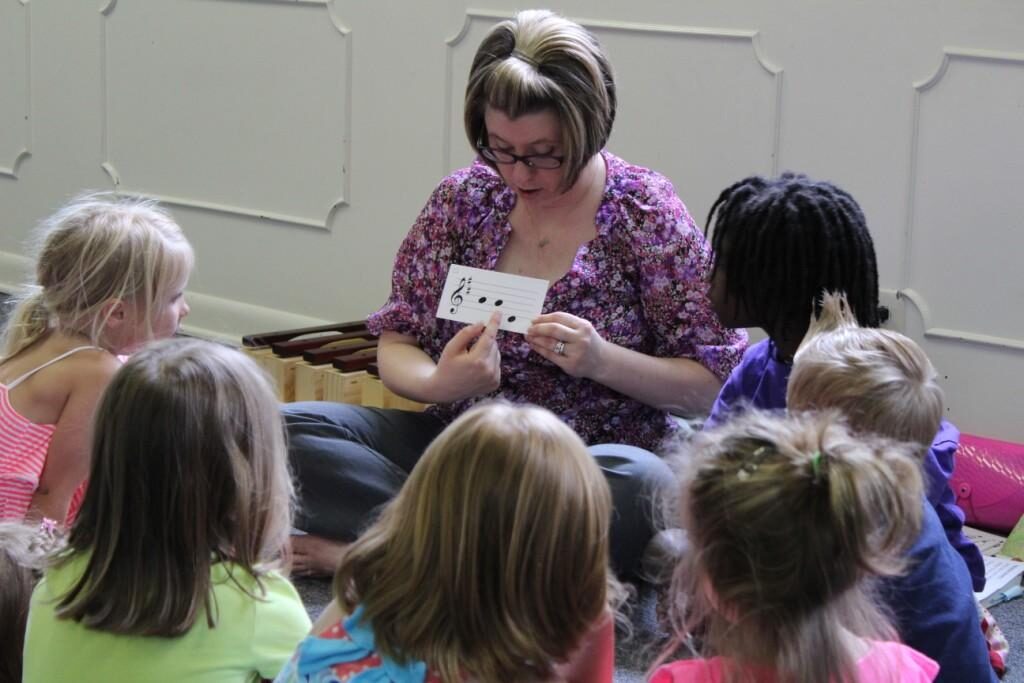Anyone who has seen Rodgers and Hammerstein’s 1965 hit The Sound of Music remembers the catchy song that Baroness Maria uses to teach the Von Trapp children to sing. The lyrics are “Doe, a deer, a female, deer, Ray, a drop of golden sun, Me, a name I call myself..,” and so on. While the syllables of Solfege, a system designed to teach the major musical scale, is assigned to do-re-mi-fa-so-la-ti in English speaking countries, the sounding of each is cleverly used in the adored song. But the history of solfege dates way back to the turn of the 11th Century, and has been used by many early childhood music programs to teach the major musical scale.
The Origins of Solfege as a Music Teaching System
The system of solfege was invented nearly a thousand years ago by Italian music theorist and Benedictine monk, Guido de Arezzo, who was also the inventor of our bar note system still used today. A renowned teacher, Arezzo was looking for a simple notational system to teach the pitches of the six notes of the major musical scale to those who had never before had musical training. At the same time, this system teaches music students to site read. To illustrate this system, Arezzo brilliantly represented the hexachord through the Latin hymn Ut queant laxis, or the Hymn to St. John the Baptist. Each successive line of the hymn used the syllable for each note – ut,re,mi,fa,sol,la, sung in the proper pitch. In the 8th Century, another Benedictine monk, Paulus Diaconus, aka Paul the Deacon, translated the words:
Ut queant laxis in Latin:
Ut queant laxis, resonare fibris
Mira gestorum, famuli tuorum,
Solve pollute, labii reatum,
Sancte lohannes.
Word translation by Paul the Deacon
So that our servants may, with loosened voices
Resound the wonders or your deeds
Clean the guilt from our stained lips
O St. John.

The Evolution of Do-Re-Mi-Fa-So-La-Ti
The solfege invented by Guido de Arezzo continued to evolve to even as recently as the 1830s. In the 1600s, Ut was changed to the open syllable Do at the suggestion of the musicologist Giovanni Battista Doni (Based on the first syllable of his surname) in order to complete the diatonic scale. Then in the nineteenth century, English speaking music educator Sarah Glover changed the “si” to “ti,” so that each syllable begins with a different letter. This is the version that was used in the famed song from The Sound of Music.
Two Types of Solfege in Modern Use
Still used for site reading training in many children’s music classrooms today, there are two main types of solfege – Moveable do and Fixed do. Moveable do, also called tonic sol-fa, has each syllable corresponding to a scale degree in the hexachord, and is mostly used in Germanic and Commonwealth countries, as well as the United States. In Fixed do, each syllable of the solfege corresponds to the name of a note, using the original “si” instead of “ti.” It is commonly used in Romantic, Slavic, and Spanish Speaking countries, and is also principally taught at the Julliard School in New York City.
Through an amazing conception and gradual evolution, the solfege system has been teaching music students and singers to learn the major music scale and site reading. While many remember it fondly from The Sound of Music, it endured from hundreds of years before as a tool to help early childhood music educators. Having changed slightly for different languages, solfege transcends them to speak the universal language of music.





